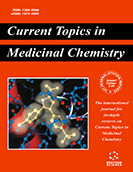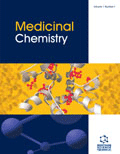Abstract
Chediak Higashi syndrome (CHS) is a rare, autosomal recessive disorder that affects multiple systems of the body. Patients with CHS exhibit hypopigmentation of the skin, eyes and hair, prolonged bleeding times, easy bruisability, recurrent infections, abnormal NK cell function and peripheral neuropathy. Morbidity results from patients succumbing to frequent bacterial infections or to an “accelerated phase” lymphoproliferation into the major organs of the body. Current treatment for the disorder is bone marrow transplant, which alleviates the immune problems and the accelerated phase, but does not inhibit the development of neurologic disorders that grow increasingly worse with age. There are several animal models of CHS, the beige mouse being the most characterized. Positional cloning and YAC complementation resulted in the identification of the Beige and CHS1 / LYST genes. These genes encode a cytosolic protein of 430,000 Da. Sequence analysis identified three conserved regions in the protein: a HEAT repeat motif at the amino-terminus that contains several α helices, a BEACH domain containing the amino acid sequence WIDL, and a WD40 repeat motif, which is described as a protein-protein interaction domain. The presence of the BEACH and WD40 domains defines a family of genes that encode extremely large proteins.
Keywords: chediak-higashi syndrome, chs, lyst gene
Current Molecular Medicine
Title: Chediak-Higashi Syndrome: a Clinical and Molecular View of a Rare Lysosomal Storage Disorder
Volume: 2 Issue: 5
Author(s): Diane McVey Ward, Shelly L. Shiflett and Jerry Kaplan
Affiliation:
Keywords: chediak-higashi syndrome, chs, lyst gene
Abstract: Chediak Higashi syndrome (CHS) is a rare, autosomal recessive disorder that affects multiple systems of the body. Patients with CHS exhibit hypopigmentation of the skin, eyes and hair, prolonged bleeding times, easy bruisability, recurrent infections, abnormal NK cell function and peripheral neuropathy. Morbidity results from patients succumbing to frequent bacterial infections or to an “accelerated phase” lymphoproliferation into the major organs of the body. Current treatment for the disorder is bone marrow transplant, which alleviates the immune problems and the accelerated phase, but does not inhibit the development of neurologic disorders that grow increasingly worse with age. There are several animal models of CHS, the beige mouse being the most characterized. Positional cloning and YAC complementation resulted in the identification of the Beige and CHS1 / LYST genes. These genes encode a cytosolic protein of 430,000 Da. Sequence analysis identified three conserved regions in the protein: a HEAT repeat motif at the amino-terminus that contains several α helices, a BEACH domain containing the amino acid sequence WIDL, and a WD40 repeat motif, which is described as a protein-protein interaction domain. The presence of the BEACH and WD40 domains defines a family of genes that encode extremely large proteins.
Export Options
About this article
Cite this article as:
Ward McVey Diane, Shiflett L. Shelly and Kaplan Jerry, Chediak-Higashi Syndrome: a Clinical and Molecular View of a Rare Lysosomal Storage Disorder, Current Molecular Medicine 2002; 2 (5) . https://dx.doi.org/10.2174/1566524023362339
| DOI https://dx.doi.org/10.2174/1566524023362339 |
Print ISSN 1566-5240 |
| Publisher Name Bentham Science Publisher |
Online ISSN 1875-5666 |
 23
23
- Author Guidelines
- Bentham Author Support Services (BASS)
- Graphical Abstracts
- Fabricating and Stating False Information
- Research Misconduct
- Post Publication Discussions and Corrections
- Publishing Ethics and Rectitude
- Increase Visibility of Your Article
- Archiving Policies
- Peer Review Workflow
- Order Your Article Before Print
- Promote Your Article
- Manuscript Transfer Facility
- Editorial Policies
- Allegations from Whistleblowers

















.jpeg)








